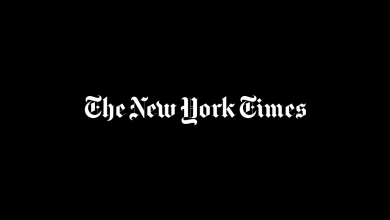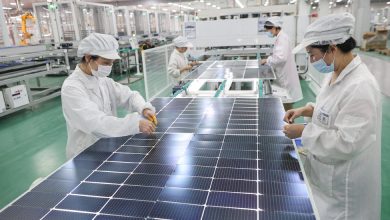Federal Reserve Signals It May Soon Slow Bond Purchases

Federal Reserve officials indicated on Wednesday that they expect to soon slow the asset purchases they have been using to support the economy and predicted that they might raise interest rates next year, signs that policymakers are preparing to pivot away from full-blast monetary help as the business environment snaps back from the pandemic shock.
“If progress continues broadly as expected, the Committee judges that a moderation in the pace of asset purchases may soon be warranted,” the policy-setting Federal Open Market Committee said in its September statement. The new phrasing eliminated wording that had promised to assess progress over “coming meetings,” suggesting that a formal announcement of the slowdown could come as early as the central bank’s next gathering in November.
Fed officials confront a complicated backdrop nearly 20 months after the coronavirus pandemic first shook the American economy. Business has rebounded as consumers spend strongly, helped along by repeated government stimulus checks and other benefits. But the virus persists and many adults remain unvaccinated, preventing a full return to normal. External threats also loom, including tremors in China’s real estate market that have put financial markets on edge. In the United States, partisan wrangling could imperil future government spending plans or even cause a destabilizing delay to a needed debt ceiling increase.
Fed Chair Jerome H. Powell and his colleagues are navigating those crosscurrents at a time when inflation is coming in high and the labor market, while healing, remains far from full strength. They are weighing when and how to reduce their monetary policy support, hoping to prevent an economic or financial market overheating while keeping the recovery on track.
“The sectors most adversely affected by the pandemic have improved in recent months, but the rise in Covid-19 cases has slowed their recovery,” the Fed said in its Wednesday statement.
The Fed has been holding interest rates at rock bottom since March 2020 and is buying $120 billion in government-backed bonds each month, policies that work together to keep many types of borrowing cheap. That has fueled lending and spending and boosted economic growth. Officials have signaled that slowing bond purchases will be their first step toward a more normal policy setting.
The central bank is trying to separate its plans for the federal funds rate — the Fed’s more traditional and more powerful policy tool — from its approach to bond purchases. Mr. Powell has said that key rate is likely to remain low for some time.
Officials released a fresh set of economic projections on Wednesday, laying out their predictions for growth, inflation and the funds rate through the end of 2024. Those included the so-called “dot plot” — a set of anonymous individual estimates showing where each of the Fed’s 18 policymakers expect their interest rate to fall at the end of each year.
More officials expected one or more interest rate increases by late 2022, with nine penciling in a rate hike next year, up from seven when projections were last released in June. This was the first time the Fed has released 2024 projections, and the middle official expected rates to stand at 1.8 percent at the end of that year.
Fed officials expected inflation to average 4.2 percent in the final quarter of 2021, and to fall to 2.2 percent in 2022.
Inflation has moved sharply higher in recent months, elevated by supply-chain disruptions and other quirks tied to the pandemic. The Fed’s preferred metric, the personal consumption expenditures index, climbed 4.2 percent in July from a year earlier.
Mr. Powell will deliver a prepared statement and take questions at a news conference this afternoon.
But there are questions about how inflation will shape up in the coming months and years. Some officials worry that it will remain elevated, fueled by strong consumption and newfound corporate pricing power as consumers come to expect and accept higher costs.
Others fret that the same one-offs pushing prices higher today will lead to uncomfortably low inflation down the road — used car prices have caused a big chunk of the 2021 increase and could fall, for instance. Tepid price increases prevailed before the pandemic started, and the same global trends that had been weighing inflation down could once again dominate.
Inflation that is either too high or too low would be a problem for the Fed, which aims for 2 percent annual price gains on average over time.
Congress has given the central bank two tasks: It is supposed to foster both price stability and maximum employment.
That second goal also remains elusive. Millions of jobs remain missing compared to before the pandemic, even after months of historically rapid employment gains. Officials want to avoid lifting interest rates to cool off the economy before the labor market has fully healed. It’s difficult to know when that might be, because the economy has never recovered from pandemic-induced lockdowns before.
Slowing down and then stopping bond purchases could give the Fed room to be nimble, allowing it to lift interest rates relatively quickly if it appears that inflation is climbing in a way that is likely to be sustained. Officials have signaled that they would prefer not to lift interest rates before bond buying stops.
But the central bank has been cautious in announcing its plans for the so-called “taper.” In 2013, when a former Fed chair suggested that a post-financial-crisis bond purchase program would slow, it roiled global markets in what became known as the “taper tantrum.”
Prior to Wednesday’s announcement, most economists expected the Fed to formally announce a taper plan at its next meeting, which is scheduled for November 2-3.




